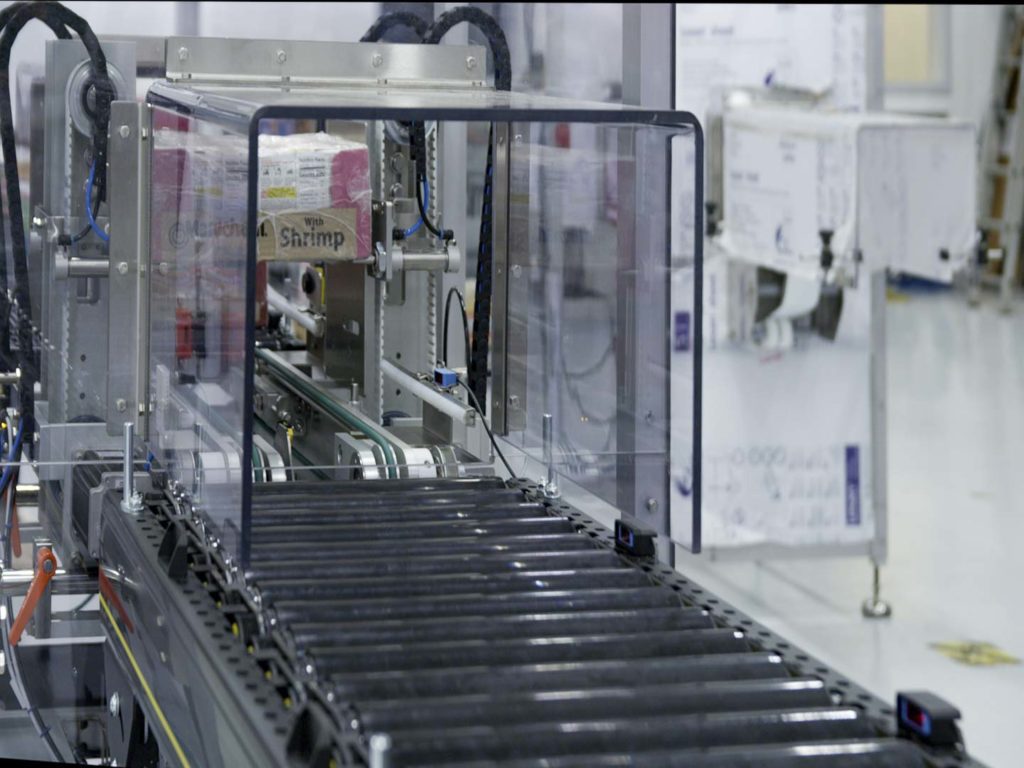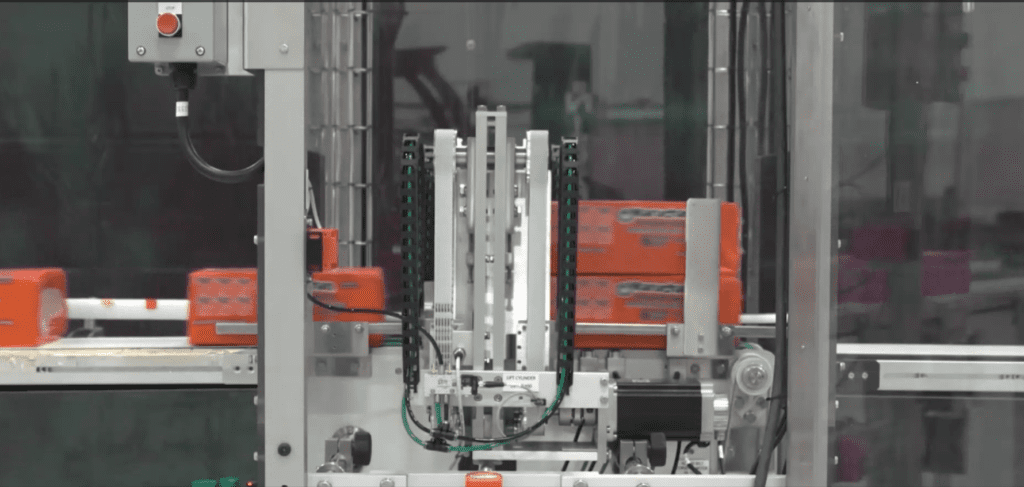In the realm of material handling systems, an Automatic Case Stacker Conveyor System can be a game-changer, redefining the efficiency and precision of case and box stacking. As a crucial component integrated into conveyor systems, a product stacker focuses on seamlessly arranging and organizing cases, showcasing a myriad of benefits that cater to diverse industrial needs.
The Essence of the Automatic Case Stacker
At its core, the automatic case stacker is a conveyor system arranged with components designed to efficiently organize cartons, cases, or containers of products, often in a predefined pattern or configuration, in order to optimize storage or facilitate further handling downstream, such as for shipping or storage purposes. Utilizing this type of inline stacker it goes beyond the capabilities of traditional systems, introducing automated features that elevate the speed and efficiency, and precision of material handling operations.




Automated Stacking Mechanisms: Robotic or Automated Stacking Arms



Adjustability for Different Products: Quick Changeover Features for the ability to handle a variety of products.


Conveyor Belt Technologies: High-Performance Conveyor Belts: The conveyor belts themselves need to be robust and designed for high-speed operations. They should offer durability, minimal friction, and a reliable grip to prevent product slippage during high-speed stacking.


Integration with Sorting Systems: Sorting Mechanisms: For efficient stacking, integration with sorting systems is key. Products need to be sorted and directed to the appropriate stacking zones seamlessly. This may involve diverters, chutes, or automated sorting systems.


Our Product Stacker systems using a conveyor line for material handling including automatic carton stackers and inline stackers involves several technical aspects to ensure its efficiency and adaptability for your operations. Here’s an overview of some key technical elements:
To accommodate various sizes of products, Product Stackers often incorporate adjustable mechanisms. These may include:
Width Adjustments: Conveyor systems may feature adjustable widths to cater to different product sizes. This allows for seamless transitions between various products without disrupting the stacking process.
Height Adjustments: Some stackers employ adjustable platforms or guides to handle products of different heights, ensuring proper alignment during stacking.




Sensors and Detectors: Optical sensors, laser sensors, or proximity detectors are used to detect the presence and positioning of incoming products. This data informs the stacking mechanism, ensuring accurate placement.
Conveyor Belts and Rollers: These form the primary means of transporting products through the stacking system. They’re designed for durability, smooth movement, and compatibility with various product surfaces.
Programmable Logic Controllers (PLCs): PLCs serve as the brain of the system, orchestrating the stacking process. They receive input from sensors and detectors, execute predefined stacking patterns, and control the movements of the stacker components.
Human-Machine Interface (HMI): This interface allows operators to monitor and interact with the system. It provides real-time data, status updates, and allows for adjustments or troubleshooting.




Diverter Gates or Chutes: These components divert stacked products onto different outfeed lines based on predetermined criteria such as product type, destination, or order. They ensure proper sorting and distribution of stacked products for further processing or shipping.
Conveyor Merges: Merge points in the conveyor line facilitate the integration of stacked products into the broader logistics flow. These merges ensure a smooth transition from the stacking process to downstream operations.
Stacking Algorithms: Algorithms programmed into the system dictate stacking patterns based on product type, size, and packaging requirements. These algorithms optimize stacking efficiency and stability, ensuring that the stacked products are securely arranged for transport or storage.
Emergency Stop Systems: These are integrated into the stacker system to halt operations immediately in case of any safety hazard or malfunction.
Safety Guards and Barriers: Physical barriers and guards are placed strategically to prevent accidental contact with moving parts and ensure operator safety.
Predictive Maintenance Systems: Some stacker systems utilize predictive maintenance sensors to monitor components’ health and performance, allowing for proactive maintenance and reducing downtime.
Continuous Monitoring: Regular inspection and monitoring of the conveyor belts, sensors, and mechanical components ensure optimal performance and prevent unexpected failures.
Each of these technical aspects contributes to the functionality, adaptability, and efficiency of a Product Stacker system operating within a conveyor line, ensuring seamless stacking of various products with precision and reliability.
Contact us today to get Kraken!








